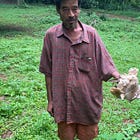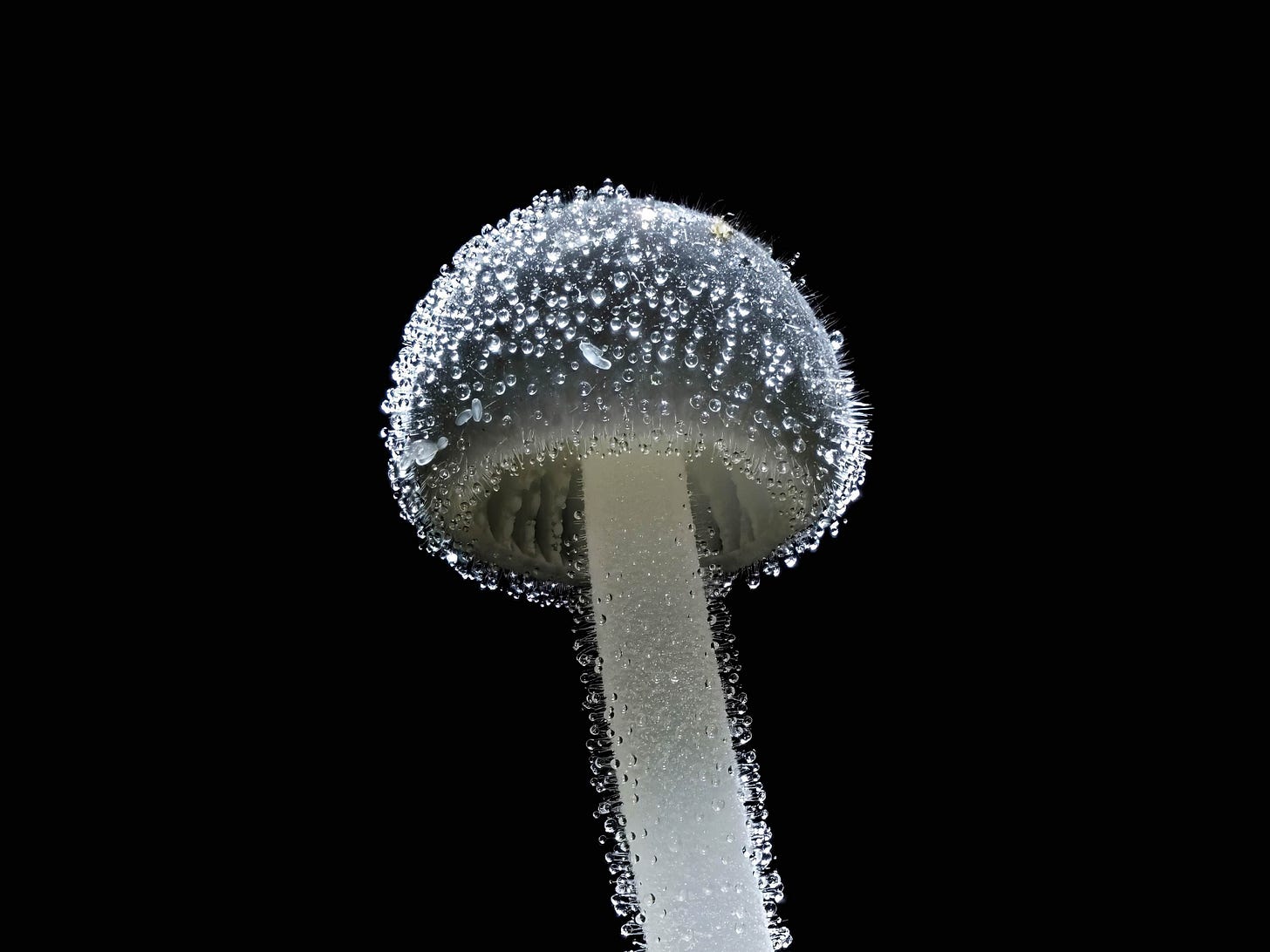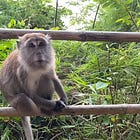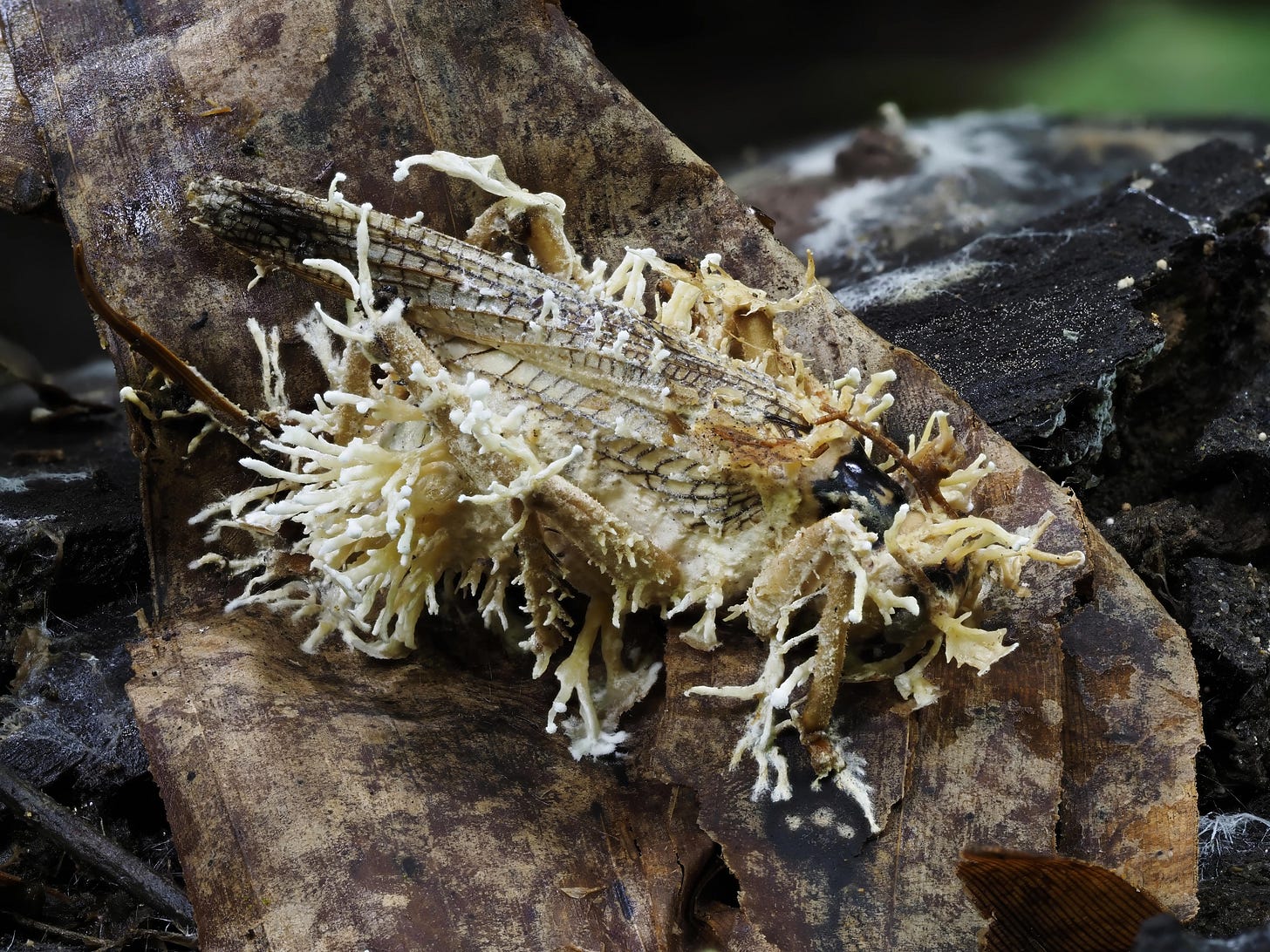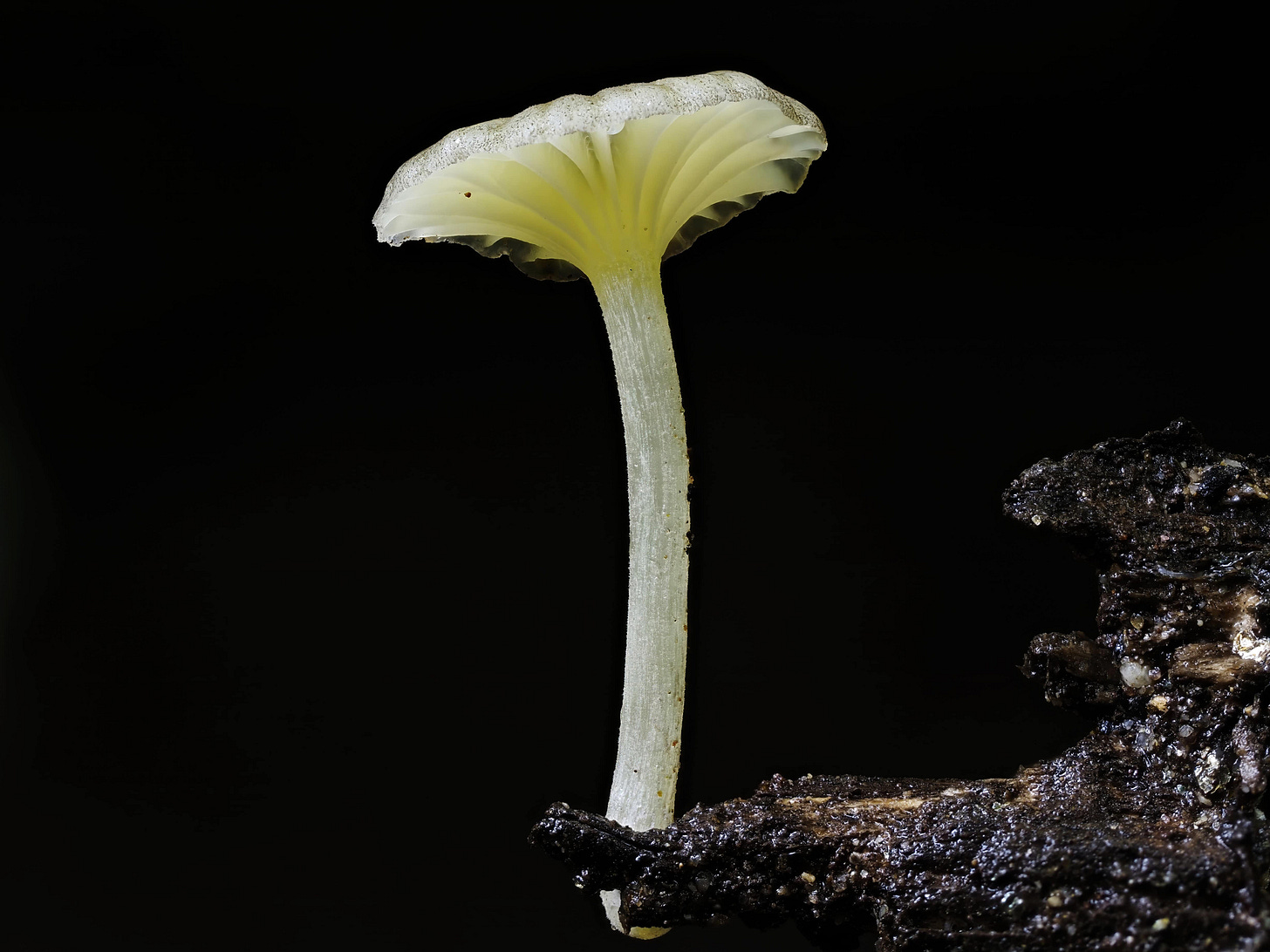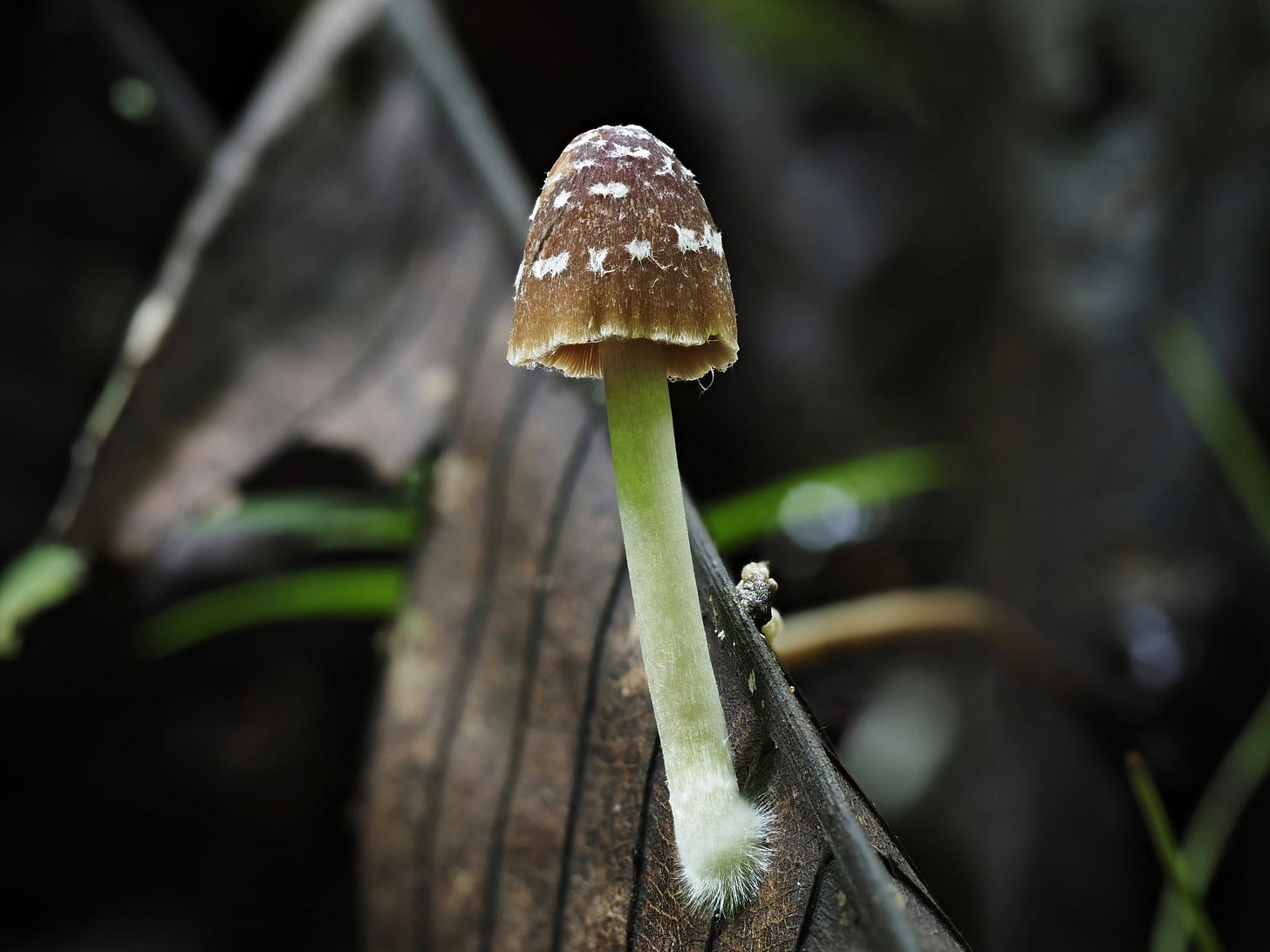Continuing on our Northern Thailand adventure from Chiang Dao, I eagerly zipped along towards the enchanting valley of Pai.
Nestled amidst lush hills, this vibrant town weaves a rich tapestry of history spanning over 5,000 years, from the ancient dominion of the Lua Tribe to its transformation into a bustling hub by Shan settlers 800 years ago.
Today, Pai stands resilient, its charm only deepened by the diverse waves of migrants it has embraced, from the Karen and Lisu tribes to Kuomintang refugees.
I spent a delightful few days exploring the trail to the Mae Yen Waterfall, accompanied by new friends equally fascinated by the allure of the rainy season's fungal treasures. Together, we delved into the lushness of Pai, eager to uncover the intriguing and bizarre fungal species thriving in this time of rejuvenation.
Mycena subcyanocephala
I was stoked to find a tiny blue mushroom I'd grown accustomed to seeing on all my social media. My friend had once encountered this exquisite specimen, and from that moment, it found a spot on my bucket list.
Luckily, the day had come, and with my friends by my side, providing patience and assistance, I was able to capture the perfect shot of this elusive mushroom.

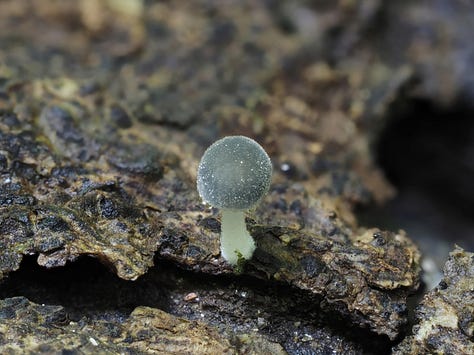
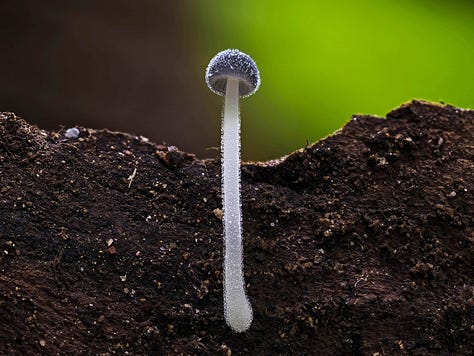
M. subcyanocephala is a type of fungus that likes to grow on wood. It belongs to a specific group within its larger family, referred to as the Spinosae section. The fruitbodies have a slightly fuzzy appearance.
The cap of this fungus is mostly white but has a subtle touch of pale blue to it. The cells on the surface of the cap and stem are thin-walled, which contributes to its delicate structure.
Geastrum / Earthstar
Further along the trail, we stumbled upon a patch of about 50 Earthstars, all at different stages of growth. I'm used to seeing different shapes and sizes of this Genus, but these were truly unique as the skin reminded me of plantains or the duku / langsat fruit.
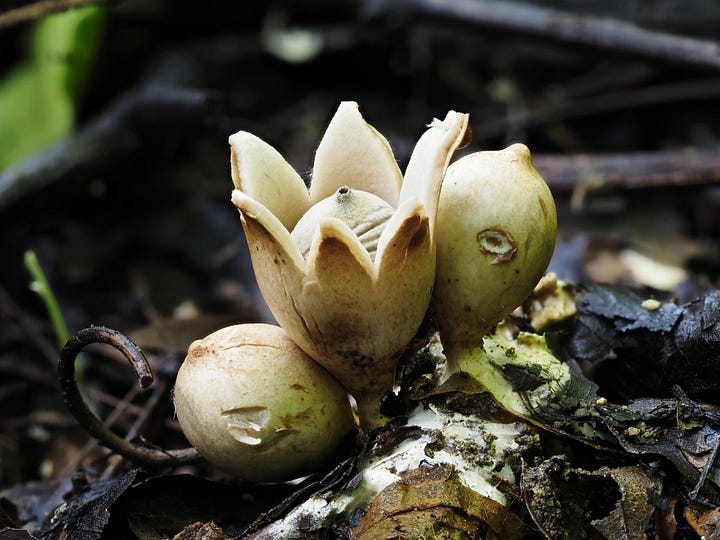
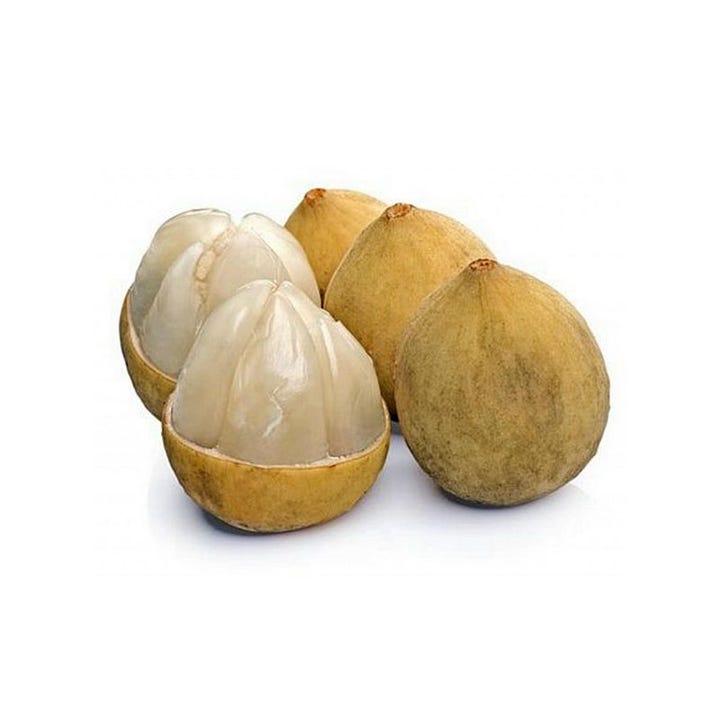
Agaricus Sect. Trisulphurati
Our journey continued to surprise us as we encountered a vibrant, bright orange mushroom, towering and adorned with spikes, bearing a striking resemblance to the Scaly Tangerine Mushroom.

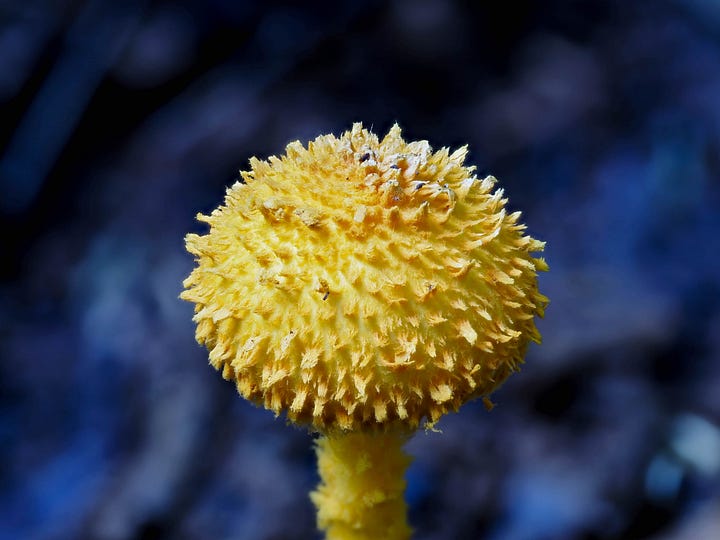
Though I had once seen a similar mushroom at Wawasan in Kuala Lumpur, it paled in comparison to the vividness and spikiness of this specimen.
Akanthomyces sp.
Just as I expressed my wish to find cordyceps, the forest seemed to respond. I crouched down to discover a cricket, completely taken over by Akanthomyces, a sight that left us all in awe.
I assume this yellow one is a Gerronema sp., but I am uncertain. It made for a decent photo, as the gill edges were translucent.
Volvariella sp. / Rosegills
As we ventured further, we discovered a Volvariella sp., a furry mushroom that seemed out of place in the warm, humid conditions.
Known for its salmon pink gills and spore prints, Volvariella lacks a ring and features an Amanita-like volva at its stem base.


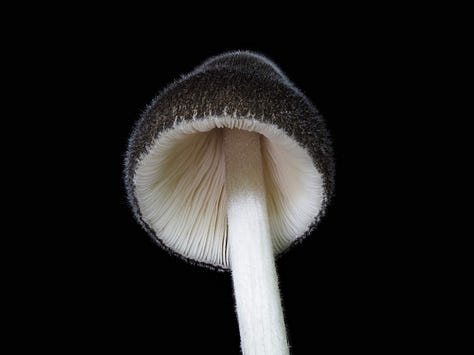
While young specimens have white gills, they can be easily mistaken for Amanita. Recent DNA studies have helped clarify their classification, aligning them closer to "schizophylloid" mushrooms like Schizophyllum commune.
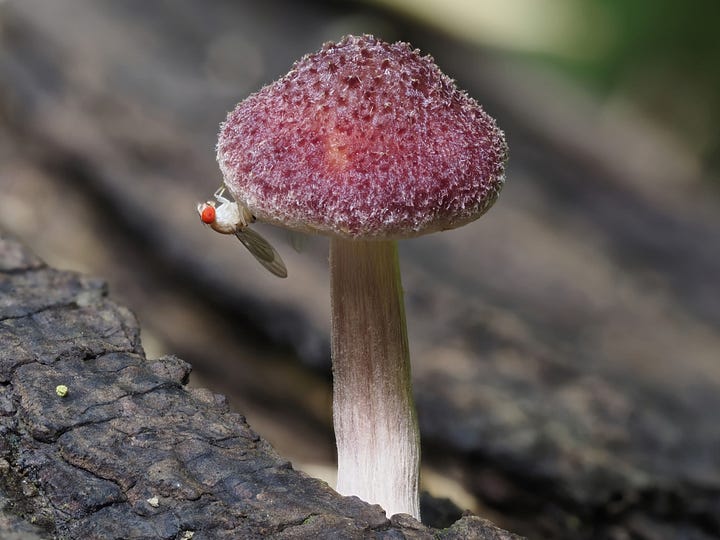

Hausknechtia leucosticta
After posting online, I awoke to +30 notifications that this may be a rare species and a first observation made in Thailand on iNaturalist (10th total in the world).
While the stipe has unique coloring, this may be due to green/yellow foliage reflecting, although numerous specimens had the same tinge.



Wrapping up our journey in Pai, it's been nothing short of a mushroom hunter's dream. But the adventure doesn't stop here. In Part III, we're heading out of Chiang Mai to explore the Mae Sa Waterfall and Monk's Trail.
And for those curious about what I've been up to lately, there are stories from Borneo and Mount Kinabalu on the horizon, plus discoveries in Vietnam to look forward to. So, stay tuned!



